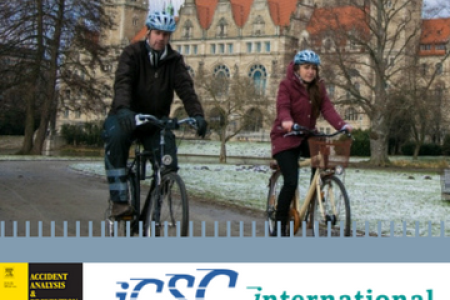Worldwide the popularity of cycling is booming due to its many positive impacts on health, environment and accessibility (Gerike and Parkin, 2015). Unfortunately, in most traffic systems cyclists are exposed to high levels of road risks (OECD/ International Transport Forum, 2013). In 2014, more than 2,000 cyclist deaths were recorded in the EU alone. Many more were seriously injured. Yet, policies to protect cyclists are scarce (ETSC, 2016) and research fundamental for the development of such policies is still in its infancy. From 30.302 papers on traffic safety indexed in Science Direct for the years 2012 to 2016, only 7.8% dealt with the safety of cycling. However, the growing numbers of participants in the International Conference on Cycling safety (ICSC) indicates that the tables are about to turn. In its fourth edition in 2015 in Hannover, the ICSC welcomed 114 participants from 24 countries and about 50 papers were presented.
SWOV is proud that 17 of these papers have been published in the special issue ‘Improving cyclist safety through scientific research’ of Accident Analysis & Prevention, edited by Divera Twisk (SWOV), Stefanie de Hair (TNO) and Dietmar Otte (Hannover Medical School). These papers cover a wide range of topics, demonstrating the many disciplines active in cycle safety, such as psychologists and sociologists, mechanical and civil engineers, as well as policy makers. This special issue aimed to chart out the progress in research on cycling safety. The papers show a great diversity and a broad scope, contributing to an international dialogue that connects both high and low volume cycling countries, encouraging todays researchers to collaborate across the boundaries of countries and cycling cultures.
The special issue includes three papers by SWOV-researchers that can be accessed for free until July 29:
-
Crashes involving cyclists aged 50 and over in the Netherlands: An in-depth study (Boele-Vos, Van Duijvenvoorde, Doumen, Duivenvoorden, Louwerse & Davidse)
- Effect of physical effort on mental workload of cyclists in real traffic in relation to age and use of pedelecs (Boele-Vos, Commandeur & Twisk)
-
An experiment on rider stability while mounting: Comparing middle-aged and elderly cyclists on pedelecs and conventional bicycles (Twisk, Platteel & Lovegrove)

